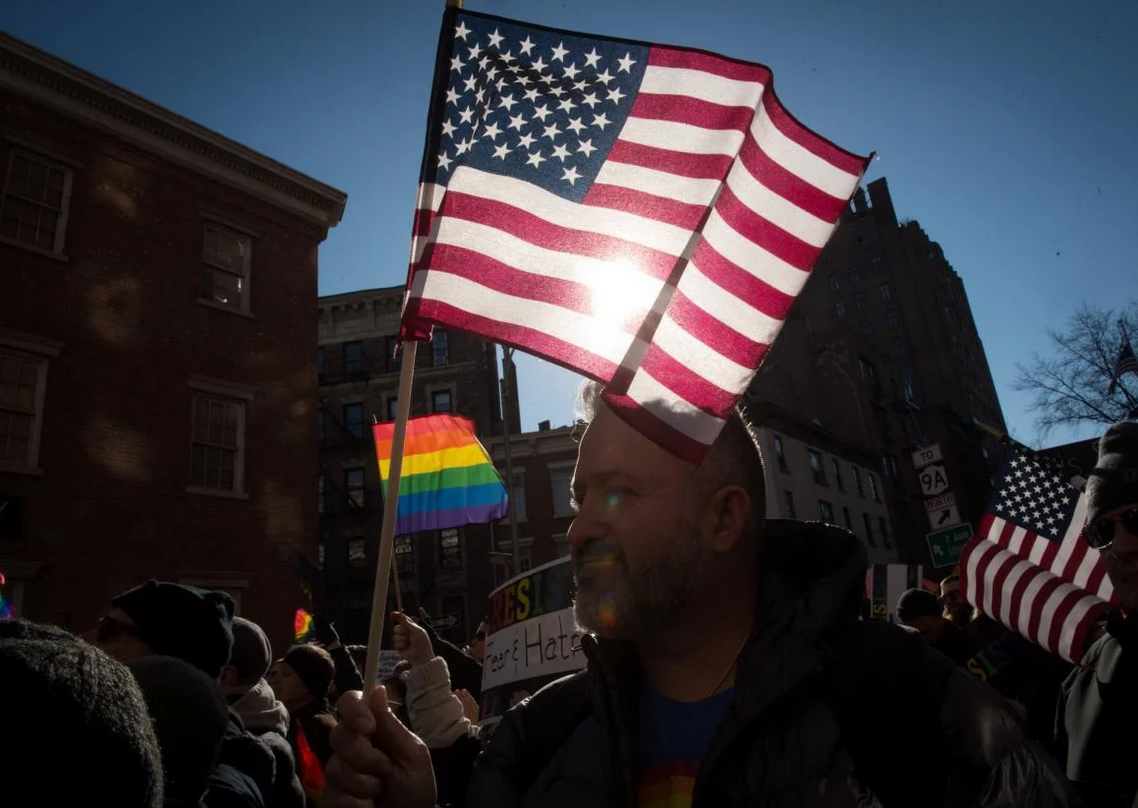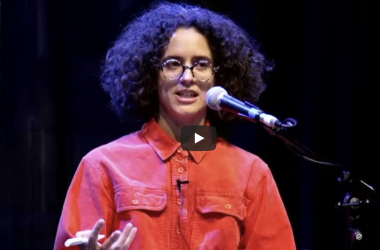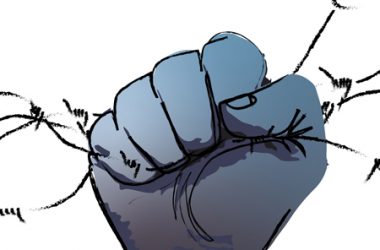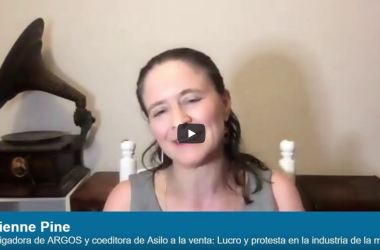By Oscar Lopez
Slate.com
June 28th, 2017
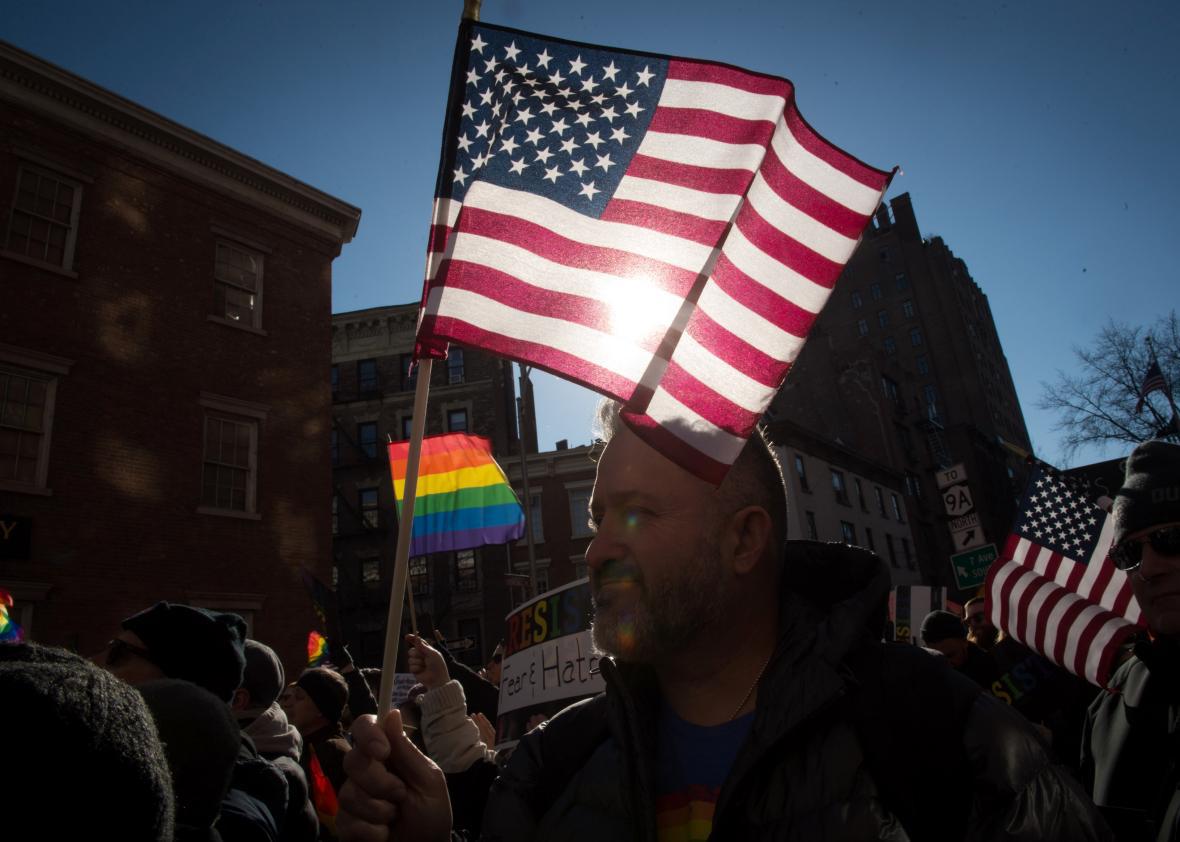
Growing up in a small town in Nigeria, Oliver Anene had always tried to make his sexuality invisible. “Kissing a guy on the street would be suicide,” says the 33-year-old on the phone from New York City, where he now lives. “It was difficult to hide.”
Still, that didn’t stop him from fighting for equality: When he moved to the capital city of Abuja, he began to campaign for LGBTQ rights with a local organization called Alliance Rights Nigeria. But the anonymity of a being in a big city didn’t last long: During World AIDS Day in 2005, Anene says Nigeria’s then-president was visiting a health fair in Abuja where ARN had a booth. “One of the reporters yelled ‘Are you gay?’ ” Anene recalls. “The head of our organization admitted ‘Yeah, I’m gay’ on national TV. That was the beginning of the backlash.”
Anene says that this moment of queer visibility ignited a national movement to crackdown on LGBTQ expression, despite the fact that gay sex was already illegal. The campaign culminated in the Same-Sex Marriage Prohibition Act of 2014, which imposes a 10-year prison sentence on anyone who “registers, operates or participates in gay clubs, societies, and organization.” The public persecution made Anene’s work increasingly risky: “I tried to keep a low profile,” he says. “But when you show up on the news, it starts to get really dangerous.”
After being harassed and receiving multiple death threats, Anene says he began to fear for his life. So, during a visit to the United States five years ago, he reached out to Immigration Equality, a New York–based nonprofit organization that provides free legal representation to LGBTQ people, and began the process of seeking asylum. “My mom has a saying,” he says. “ ‘He who fights and runs away, lives to fight another day.’ ”
Like Anene, thousands of people around the world are forced to flee their home country every year because of their sexual orientation or gender identity, and an increasing number end up in the United States. According to a 2012 report from the Heartland Alliance, an estimated 3,500 LGBTQ refugees arrive in the U.S. annually: Every year, 1,250 queer people are granted asylum. But attaining refugee status is a complex and difficult journey, throughout which asylum-seekers like Anene must constantly negotiate visibility. Because while being out back home could get you killed or thrown in jail, during the asylum process, visibility can be the only way to prove you need protection. And even if their claim is successful, LGBTQ refugees are forced to confront the reality of a country that can often be hostile to immigrants, queers, and people of color.
“Visibility is a double-sided sword,” says Siobhán McGuirk, an adjunct professor at Georgetown University whose research focuses on migration and sexuality. “Being visible becomes necessary for a case, but it also puts people at risk.”
Under international asylum law, to qualify for refugee status, asylum-seekers need to prove that they are members of a minority group and have a “well-founded fear of persecution.” To prove their membership to this marginalized group, in this case being LGBTQ, refugees have to show both visibility and immutability—the fact that their status is unchanging.
But for LGBTQ asylum-seekers, both of these criteria can be problematic. Immutability often discounts people that are bisexual or sexually fluid, says McGuirk, and as for visibility, “Why would anyone be visible if visibility means persecution or death?” But in an interview with an adjudicator, asylum-seekers are required to offer evidence of their sexuality or gender identity. “You might be asked for photos of you and your partner,” says Jackie Yodashkin, Public Affairs Director at Immigration Equality. “But often people don’t take them, and why would you keep them when it’s so dangerous?”
Anene, from Nigeria, was lucky. While the visibility of his activism made him a target in Nigeria, it afforded him ample evidence for his asylum case, and his refugee status was approved relatively quickly. But for many people, the process can be much longer and more difficult. “Sometimes it hinges on telling your story,” says Yodashkin. “People get asked really invasive questions. It can be a harrowing process of recounting persecution.”
Marja, 33, is a gay woman from Eastern Europe, where she was constantly trying to hide who she was: “I became a master of deflection,” she says. But eventually, the fear of being found out became too much. “I had to find an escape to save myself, to save my sanity, my life.” Diagnosed with anxiety, depression, and post-traumatic stress disorder, she is seeking asylum in the U.S. But putting together her case has meant reliving the trauma she was trying to leave behind. “I came here to forget and to heal, so it’s hard to go through everything again,” she says. “It’s emotionally exhausting. The burden on top of the mountain of burdens.”
McGuirk, the Georgetown professor, says asylum-seekers must also confront preconceived notions of what an LGBTQ person looks like in the interview process: “Being out and proud is understood in a very homonormative, mainstream way,” she says. According to Anene, such attitudes mean asylum-seekers may try to conform to an adjudicator’s stereotyped expectations. “The other day a friend was asking me if he should wear makeup or a dress to the interview to look more gay,” he says with a laugh. “I don’t know what ‘looking gay’ means—it’s ridiculous.”
While attitudes like these are improving in places like New York or San Francisco with large queer communities, McGuirk says that in the South, it can be more challenging to get past these kinds of outdated ideas about queer visibility: “The differences can be quite shocking,” she says. “There’s no consistency across asylum adjudication.” According to the report from Heartland Alliance, in 2010, there were 4,168 LGBT asylees living in California, versus just 263 in Texas. And while the national average for asylum approval is 48 percent, in states like Georgia it can be as low as 2 percent. This disparity disproportionately affects Latinx asylum-seekers, who are more likely to arrive as undocumented by crossing into the U.S. over land, and it privileges more financially stable refugees who can fly into places like New York.
Among those undocumented LGBTQ people who do make it into the U.S., McGuirk says that all too often, they are thrown in detention by Immigration and Customs Enforcement agents before even knowing that asylum is an option. “They’re immediately forced into the defensive,” she says. A report from the Center for American Progress titled “ICE Officers Overwhelmingly Use Their Discretion to Detain LGBT Immigrants” found that “LGBT immigrants were detained with startling regularity regardless of legal requirements, vulnerability to abuse, or even the absence of flight risk or risk to public safety.” Immigration activists fear this could get worse under the Trump administration’s immigration crackdown. “People are scared to go to Pride this year,” says Yodashkin. “They’re scared to be visible.”
If detained, trans women especially face much greater dangers than cisgender immigrants: A November 2013 Government Accountability Office report found that one-fifth of confirmed sexual assault cases between 2009 and 2013 in detention facilities involved trans immigrants. “It’s dangerous for anyone to be in an immigration detention center,” says Yodashkin. “But trans folks are especially targeted for violence. It’s just not a safe place.” ICE has attempted to address this issues by placing trans people in special individual pods, but this can lead to isolation, and, according to the CAP report, “even with this precaution, abuse persists.”
The Trump administration’s travel ban, recently reinstated by the Supreme Court until it can consider the order’s constitutionality in October, is another major concern for LGBTQ asylum-seekers. The executive order, which bars entry to anyone from Iran, Libya, Somalia, Sudan, Syria, or Yemen and places a 120-day ban on refugees, could be particularly damaging to LGBTQ people, who may be fleeing anti-gay laws and persecution in these countries. “It disproportionately affects queer people,” says Yodashkin of the travel ban. “And it could leave people stuck in countries where it’s not safe. We’re talking about life or death here.”
But even for those asylum-seekers lucky enough to gain entry to the U.S. and have their asylum claim filed, meaning they can legally remain in the U.S. during processing, the hardship is far from over: Unlike in countries like the U.K., the U.S. government doesn’t offer any kind of financial support during the asylum process, and without legal access to work, asylum-seekers often end up on the street. “People are forced into being visible by the system,” says McGuirk. “But they’re not given the kind of complex support they need.”
With nowhere to go after filing his asylum claim, Anene, the Nigerian refugee, ended up in a homeless shelter in New York. “It was terrifying,” he says. “The term ‘faggot’ was thrown around a lot. I was fleeing Nigeria so I could stop hiding who I was, and here I was again trying to pretend to be straight.”
Marja was lucky: She got taken in by a lesbian couple for her first few months in the U.S. “Seeing how they as a couple were so accepted by society, in a church setting, was extremely beneficial,” says Marja. “The beginning of stopping to hate myself for being gay. To see that you can be loved.”
Once she got her work permit, Marja was able to find a steady job and move into her own place: She now lives with a gay Russian couple who are also applying for asylum. But working hasn’t been without difficulties. “I have a lot of coworkers who come from countries with similar views towards gay people,” she says. “I’m not comfortable being out and proud.” This, too, is common: According to Scott Pohl, Senior Community-Based Protection Advisor for UNHCR, LGBTQ refugees can often face discrimination even within immigrant communities: “When people flee, the stigma that they experienced prior to their flight can come with them.”
After spending three months in the homeless shelter, Anene’s asylum application was accepted: that year, he marched in New York Pride for the first time. “To say we are Nigerians and we’re gay in public was so overwhelming,” he says. “To represent Nigerians and other Africans was elating.” He’s gone to every New York Pride since.
But according to Yodashkin, marching in Pride and being so visible may be too big a step for some asylum-seekers: “A lot of people just aren’t ready,” she says. “It can feel like you’re lining up to be a target.” Marja says that she went to Pride in Washington, D.C. this year, and while she enjoyed watching it, she didn’t feel comfortable marching in the parade. “I guess I’m not OK with being gay—it’s part of the healing process,” she says. “I feel part of the gay community, but the part that’s not loud and proud.”
Others face even greater challenges at Pride events that have become increasingly mainstream. McGuirk says she’s spoken to many LGBTQ Muslims who are “appalled by the comments made to them” at Pride events. “LGBTQ Muslims do want to engage and talk about transphobia and homophobia in their community,” she says. “But they’re also forced to talk about Islamophobia and transphobia in the gay community, and that can be very draining.”
Anene, too, admits that “gay culture can be overwhelming.” But for him, the most difficult part of living in the U.S. has been confronting racism. “When you grow up in Africa as a gay man, that’s the only difference you have,” he says. “The color of your skin isn’t important. Then you move here and you start to see the inequality that’s happening.” For McGuirk, this is a part of the conversation on asylum that too often gets left out. “Being a black immigrant who is also LGBT, the U.S. is not a safe place for you,” she says. Yodashkin agrees: “There are so many different levels of discrimination that people have to navigate. It’s always a dance.”
Despite his background in activism, Anene and his Nigerian friends found it hard at first to relate to the Black Lives Matter movement: “We don’t consider ourselves African American,” he says. “We didn’t feel like we should engage in the conversation.” But after experiencing discrimination firsthand too many times, Anene began to realize that racism doesn’t discriminate. “The system is rigged to deprive people of color of a healthy life,” he says. “A police officer isn’t going to be like ‘Oh, you’re from Africa, you’re OK.’ It’s not going to happen.”
Still, Anene’s main focus continues to be LGBTQ rights, and he is working with and volunteering at several organizations in New York. But ultimately he wants to return to Nigeria, as soon as he gets American citizenship. “Going with a U.S. passport will offer me some protection, so I can get more involved, be louder,” he says. “Hopefully one day Nigeria will become more accepting. But people have to fight for it. That’s why I have to go back.”
Editor’s note: Marja’s name has been changed to protect her privacy and security.
Read more of Outward’s Visibility Issue.
Check out Siobhán McGuirk & Adrienne Pine’s new book:


